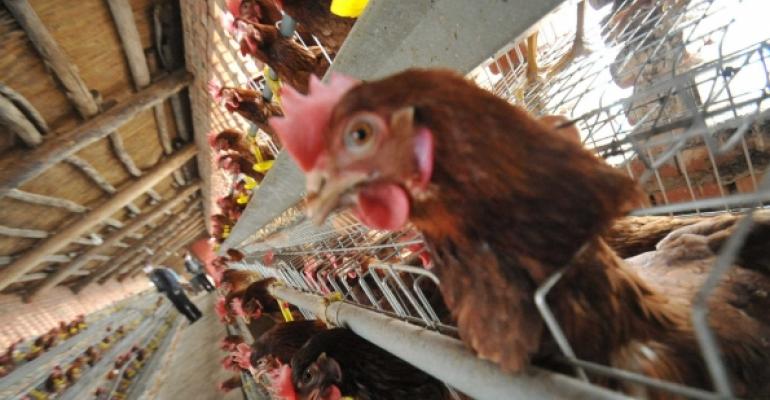 Earlier this week, the U.S. Department of Agriculture said that the avian influenza outbreak had spread to an egg laying facility in Iowa, leading to the destruction of 5.3 million chickens there.
Earlier this week, the U.S. Department of Agriculture said that the avian influenza outbreak had spread to an egg laying facility in Iowa, leading to the destruction of 5.3 million chickens there.
That’s by far the biggest outbreak at a single farm, more than doubling the total number of birds chicken and turkeys, affected by the outbreak in one fell swoop. The outbreak, which started in March at a single turkey farm in Minnesota, appears to have spread to other poultry producers in the Upper Midwest.
But the outbreak is long from having any impact on chicken prices, a key commodity for numerous restaurant chains. Nearly 8 million chickens and turkeys have been affected by the outbreak, according to the Wall Street Journal, but that’s a drop in the bucket compared to the 9.2 billion broiler chickens and 235 million turkeys produced last year.
Still, it’s something restaurants should be watching as the outbreak plays out. “It is raising eyebrows,” said Dan Patterson, poultry category manager for Denver-based food buying cooperative SpenDifference. “We’re still in the caution stage. I would say everybody needs to keep a careful watch on it.”
Patterson suggested that restaurants should examine their supply chain, and if they get all of their poultry supplies from a single producer, it might be time to research backup producers just in case.
“If you’re single sourced, open up your avenues of communication and have more than one source in the event that something major happens,” he said.
He also suggested that research and development departments take a closer look at pork. “Pork is by far the best value we have going on right now,” Patterson said.
The H5N2 avian influenza virus has minimal affect on humans, health officials say, but it is highly pathogenic and can hit turkeys and chickens hard. The federal government closely monitors the virus and poultry farmers are to destroy affected birds and quarantine areas affected by the virus. The area is also to be disinfected, monitored and tested.
At this point, there is an “ample supply of chicken meat” on the market, Patterson said. In addition, he said, countries that import some poultry from the U.S. could ban those imports, which could actually increase supply on the domestic market if things worsen, at least for a time.
There might be some modest evidence that the outbreak is affecting turkey prices. Patterson suggested that prices for turkey breast meat are over $3 a pound, higher than they should be at this point. “We should have more turkeys and more meat in the freezers than we did last year,” he said.
The outbreak at the Iowa egg farm represented less than one percent of the egg laying population, Patterson said. “One percent is not going to have much impact on the total marketplace,” he said. “But if that one percent becomes 10 percent in two weeks, then eyebrows will be raised.”
On the bright side, Patterson said that other costs associated with raising poultry remain low, so the only things that should affect prices will be supply and demand. Corn prices, used heavily in feed for chicken, remain low. “We’re blessed we’re still working off cheap feed ingredients,” he said. “That’s not a cost factor. It’s just the number of turkeys and pounds available.”

